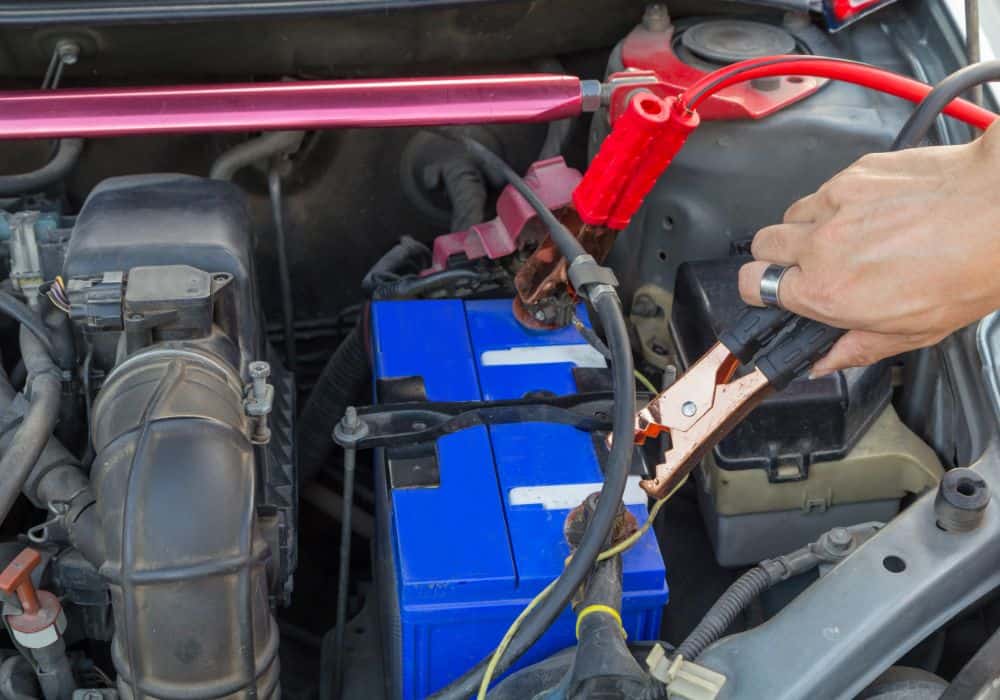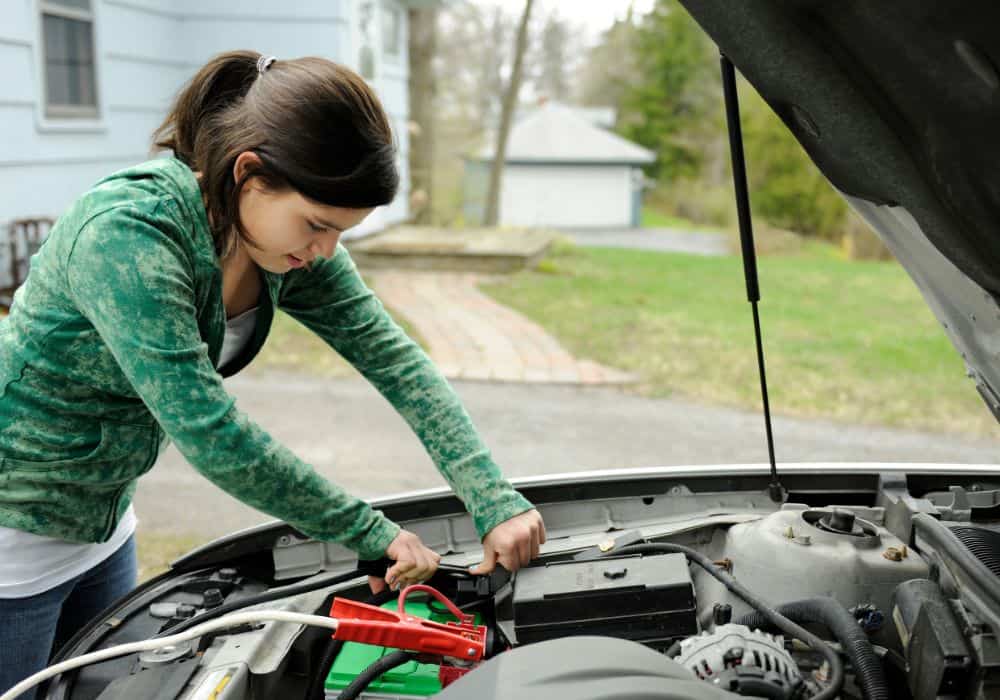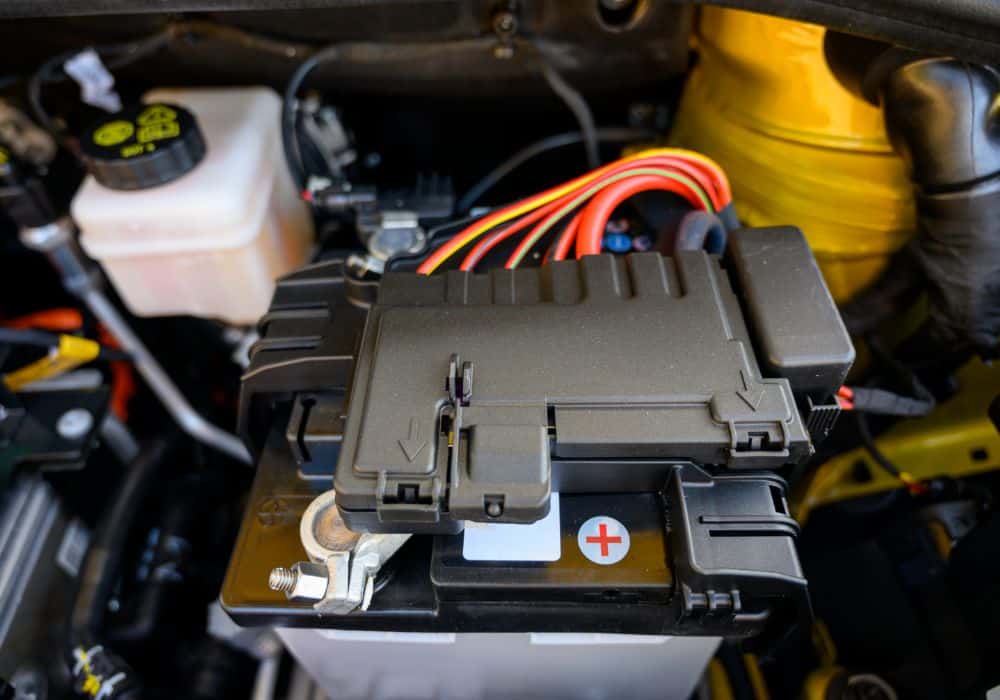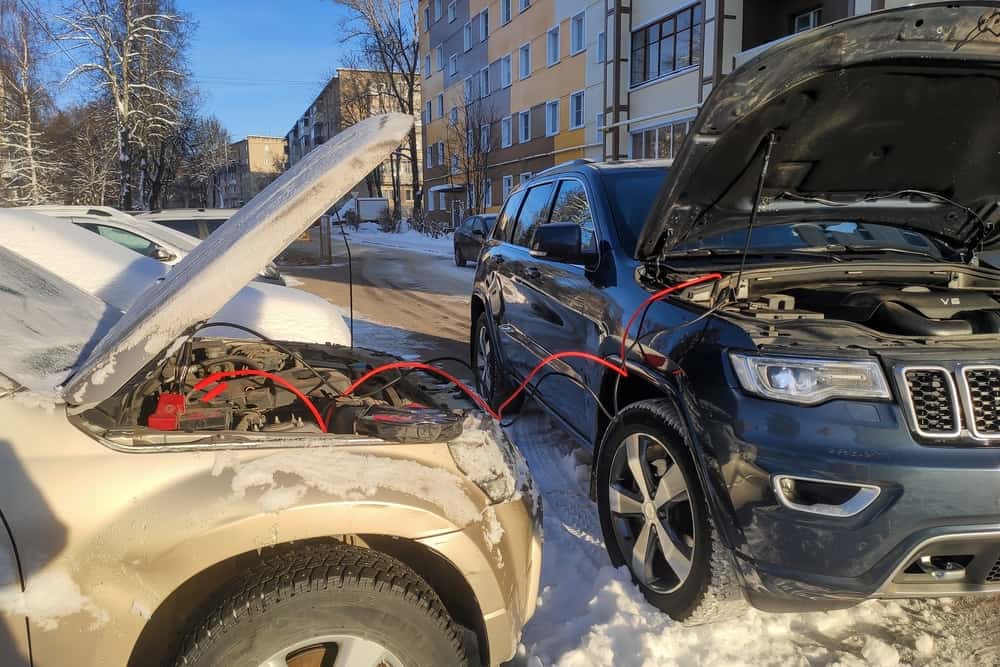Even the best 12 volts batteries run out of juice and will require a charge. It may be due to leaving the lights or radio on for too long. But if you have a dead battery in the middle of the road, chances are that you do not have the requirements needed to charge it at that moment.
Fortunately, there are simple ways to charge the battery without a charger. This article explains the steps and how to protect yourself while doing so. If you know what to do, you do not always have to carry a car battery charger everywhere.
Table of Contents
Taking Protective Steps
Before charging your flat battery without a charger, you must take some steps to protect yourself. The ideal way to charge a battery is with a charger because it is convenient, fast, and safe.
However, when there is no charger, you may need to use other methods that may expose you to danger. Therefore, protecting yourself is crucial, and in light of this, ensure you have solid and thick work gloves.
Depending on the charging method, you will also need protective eyewear and other protective clothing. You may need wire probes with clips and a wire brush for cleaning after charging the battery.
Different Methods for Charging a 12V Battery Without a Charger

The following are methods you can employ to improve your battery’s voltage if you do not have a charger:
1. Solar Panel with a Charger
One of the easiest methods for charging a dead battery is to use a solar panel with a charger. You can simply connect the wires and plug the charger into the battery to charge it. If you already have a home solar panel, it makes the job easier as you do not need to buy a new one.
However, this method may be inefficient, especially if you need to use the battery in the next few hours. Charging a dead or almost-fully discharged 12V with a solar panel will take many hours, and those hours will only provide barely enough charge to start it.
You must also consider the solar panel’s energy output. A 12V battery will need a 50W solar panel to charge it fully in three days. A solar panel with double that output will take about two days to charge a dead battery. Therefore, it may not be the best option, especially if it is your car battery.
If you use this option, ensure you use a solar charge controller to avoid overcharging and damaging the battery. The good part is that the power source is free and can prevent reverse currents. Consider the size of your battery before selecting a solar charger to optimize and speed up charging.
2. Another Car
Charging the battery with another car is a standard method; many owners use it if they can find a helper. Simply remove the car’s battery and install yours in its place. Then, start the car and run it for a few seconds or minutes to charge it.
Note that this method only works if your battery is similar in specifications, size, and shape. Do not try forcing the battery into the car if it does not fit. Use another method if you are unsure of the other car’s specifications. Otherwise, you may damage your battery and some functions in the other vehicle.
3. Battery Isolator
Consider using an isolator to charge your battery if you cannot access a charger. While it may not be the best option, it will boost a dead car battery to get it running again. A battery isolator drives charge from a primary battery’s alternator to charge your battery.
Here’s how it works: the first battery’s alternator charges the primary battery before transferring some of the power to the secondary battery through the isolator. It is s simple process, especially if you do not have other options. Remember that you may not get a full charge, just enough to get the battery going again.
4. Jump Cables

One of the best ways to charge a car battery when it is dead is to jump-start it. Using the proper charge can turn the battery back to life and start the car again. Doing this helps you move the car to a garage or any place to charge the battery correctly.
You will need another car with a running engine to jump-start your dead battery. Connect the jumper cables from the running vehicle to your battery and start your engine. Your battery should come alive, and you can drive the car.
If the battery is defective, however, this method may not work. The same applies if you wrongly connect the cables from one battery to another. It would be best to read the battery’s manual to determine the proper connection or have an auto mechanic do the job for the best results.
If you must jump-start the car yourself, without the help of a mechanic, ensure you clean the positive and negative terminals before connecting the cables. You do not want dirt or corrosion on the battery because the cables will not work. Get a wire brush to clean the terminals.
The jump leads must be at six gauges or less to ensure a steady and safe current flow. In addition, ensure you keep the cables connected from the donor car to yours for at least 5 minutes to get your battery running correctly.
5. UPS Inverter
If your home uses solar power, you may have a UPS inverter. The inverter is similar to a 12V battery and converts DC power from the sun to AC power you can use within your home. Most of them are strong enough to charge a car battery, so try them if you have one.
However, ensure you check the manual to determine how well the inverter and battery work for a car battery. The primary point is to see if they are suitable for the job before checking if they can charge it. Additionally, follow the specific steps to charge the battery with your inverter. Otherwise, you may damage the inverter and car battery beyond repair.
6. Jump Starter
A jump starter is a requirement for every car owner because it is handy when your battery charge drops in the middle of nowhere. You cannot tell how well your alternator works or can charge the battery at all times, so you must have another plan for a battery emergency.
The jump starter will only charge the battery enough to start the engine. Therefore, getting a full charge after starting your engine is crucial to prevent further discharge. But once you start the car, the alternator should keep the battery going until you can fully charge it.
The jump starter will only work if you turn off the lights, air conditioner, stereo, and other extra connections. Also, clean the terminals with a wire brush to remove dirt for a proper connection. Otherwise, the load may be too much, and the jumper cannot carry it.
Things to Consider

The power output is a primary consideration if you charge your car battery without a charger. It is crucial to slow-charge the battery to avoid overcharging it, blowing, or causing it to fume. The trickle charge to the battery may take too long to charge, but it is the safest step.
While you have multiple options for charging the battery without a charger, picking the option that works best considering your car and battery is best. Not every method is viable for everyone, so if you choose any option, ensure you can handle it yourself and have all the necessary tools.
You will also need a multimeter to track the charging progress because there may be no other way to determine it. If you disconnect the power supply from the battery earlier than you should, it will mean starting the charging process again, which may cause delays.
Additionally, you may want to connect holiday lights between your car battery and the power source. The lights will help you to check when you are overcharging your battery. While charging, the lights should be lit and warm on the outside.
Once they get too hot or their brightness increases, the battery is overcharging. Disconnect it from the power source and determine the cause of the problem. Note that holiday lights may only work for some methods, so find other ways to track the power output.
Takeaway
There are several methods of charging a 12V battery without a car charger. While a charger is the best and safest method, it may not always be viable. Therefore, consider one of these methods and its ease of use, especially if you have never tried it.
Also, consider the safety steps and other factors, such as how to track the charge progress. Doing this will help you avoid overcharging the battery or completely damaging it.
